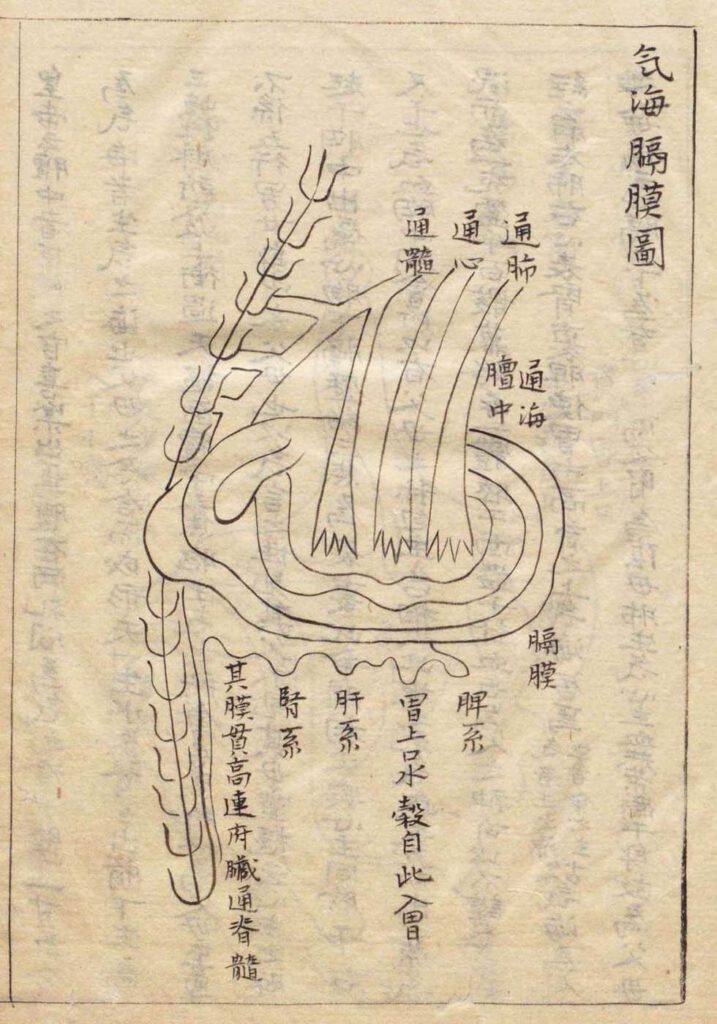

No title. The sea of qi and the diaphragm. Kajiwara Shōzen 梶原性全 (1265–1337) Man’anpo 万安方, 1315–27, scroll 54. Edo 江戸 period (1603–1868) manuscript. National Archives of Japan.
‘Illustration of the sea of qi and the diaphragm’, Qihai gemo tu 氣海隔膜圖. Wang Haogu 王好古 (1200–64?) The Great Teaching of Yi Yin’s Decoction Classic Propagated by [Zhang] Zhongjing, Yi Yin tangye Zhongjing guang wei dafa 伊尹湯液仲景廣爲大法, 1234. Japan, Edo 江戸 period (1603–1868) manuscript. National Archives of Japan.
Cross-reference: Travelling guts